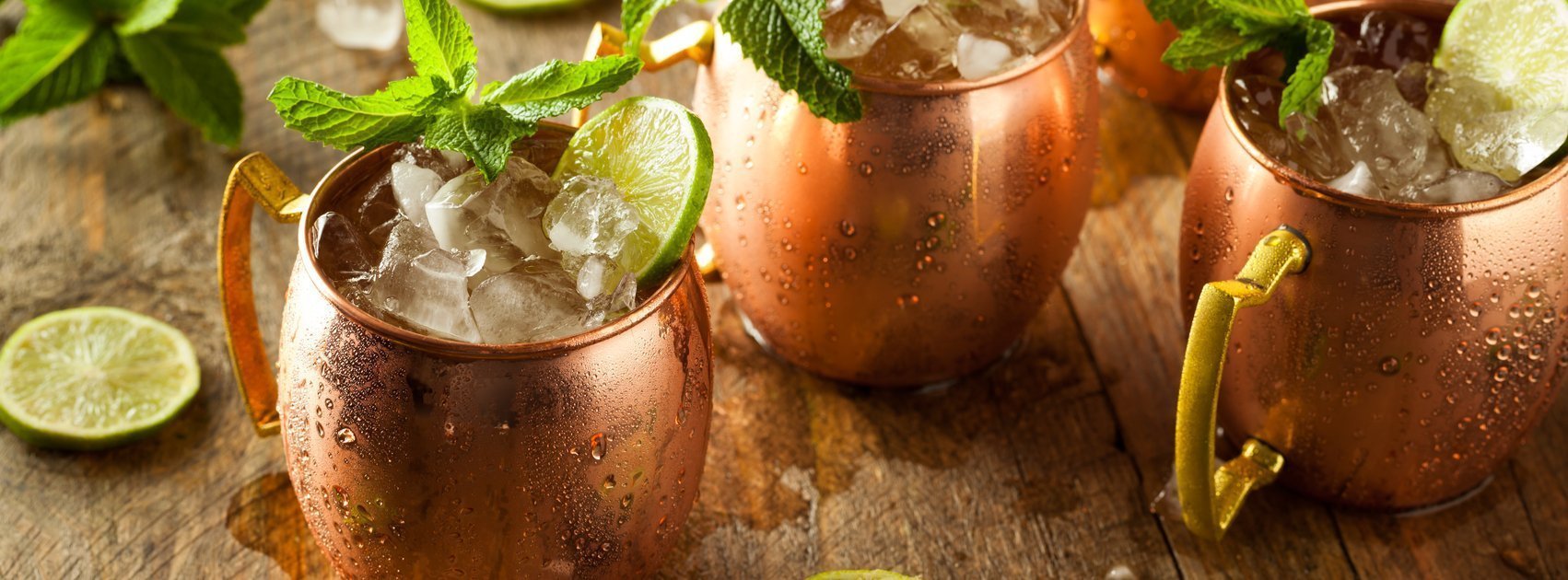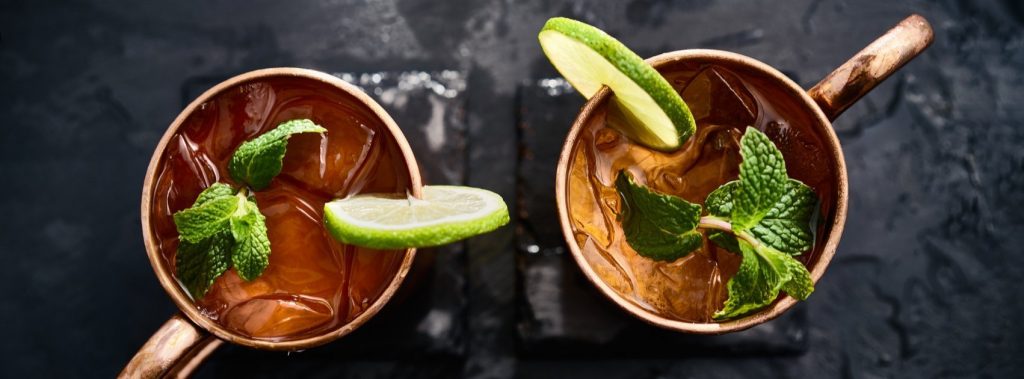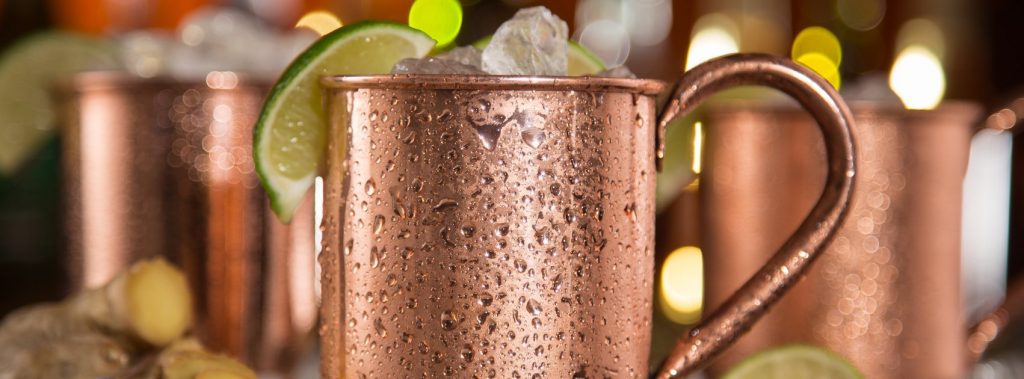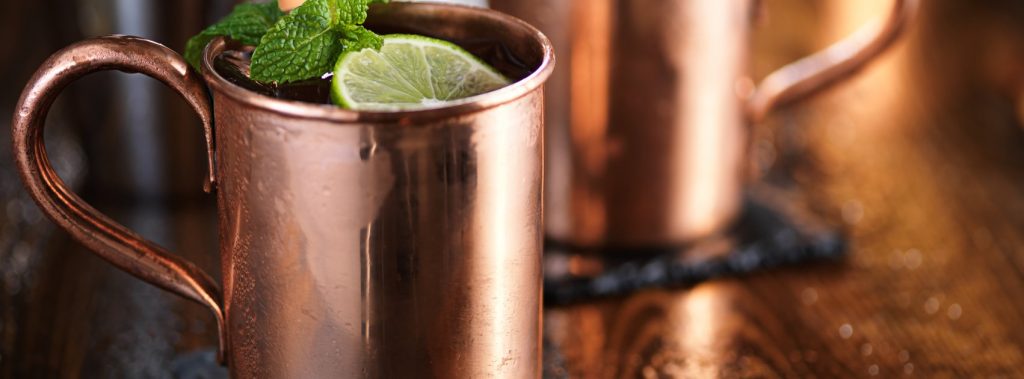
The History of the Moscow Mule
Throughout college I worked as a bar back at a prominent bar on my school’s campus. The clientele typically ordered whatever was cheapest or on special: vodka clubs or domestic drafts; but about a year into my tenure a box of hollow copper tinted mugs showed up. The head bartender told me to wash the mugs and that we’d be adding new cocktails to our drink menu.
The first drink he highlighted was a “Moscow Mule.” At the time I had never heard of a Moscow Mule, but after that day I began to see copper tinted mugs in every bar I went to. Which prompted me to ask the question “Where did the Moscow Mule even come from?”
Not From Where You’d Expect

Names can be deceiving. One would assume that the Moscow Mule originated in Moscow or at least Russia. Not at all. Much like French Toast; the Moscow Mule was not created in the place it is named after. In fact, the only link to Russia evident in the creation of the Moscow Mule is Sophie Berezinski, a Russian-American immigrant who created the original design for the mule mug in her father’s copper factory.
The origin story of the Moscow Mule is essentially the American dream reimagined into a cocktail. The owner of a struggling company named “Smirnoff” – John Martin met Sophie Berezinski. Independent of those two, existed a man named Jack Morgan who owned the Cock n’ Bull Pub on Hollywood’s Sunset Strip and happened to be heavily invested in Ginger Beer, which was mostly rejected by the American public.
A Beverage Of Opportunity

To zoom in even further, the Moscow Mule was invented in Los Angeles during World War II, in approximately 1941. The products coming together to create this beverage were essentially rejected by the American public. In World War II America, brown spirits were significantly more popular than white spirits – whiskey, cognac, and brandy were far more popular than vodka. On top of the lack of popularity for white liquors, in early America gin was the white liquor of choice.
In a similar situation, Ginger Ale had become a staple of American culture, where it remains today as a far more successful product than its ginger cousin – Ginger Beer. Sophie Berezinski began selling her copper mugs from door to door, looking to clear the large stash of Russian imported copper mugs out of her 1940’s LA apartment.
In a story of perfect time and place, serendipity, and happenstance – a completely refreshing and timeless cocktail was invented. The beverage comprised of ginger beer, lime juice, and vodka contained in an attention-grabbing copper mug, became known as the Moscow Mule.
A Bumpy Ride to the Top

It’s rise to popularity faced roadblocks throughout, popularizing copper mugs, vodka, and ginger beer was simply the first of many hills to climb. Throughout the Cold War, people turned to the Moscow Mule as a simple of Russian culture, attempting to vilify the beverage.
The tale of the Moscow Mule is both a fun story muddied in mythology and an interesting reference point for understanding the story of 20th Century America. The growth of what is now a common drink to find in most bars was sparked by relationships and innovation. The growth of the Moscow Mule helped to create the liquor powerhouse that is the Smirnoff company. Its story involves cooperation between Americans and immigrants in pursuit of better lives. There was a massive decline in both vodka and the Moscow Mule beverage with the rise of McCarthy-ism and anti-Communist sentiment, so much so that New York City bartenders boycotted Smirnoff.
Zooming in on something as seemingly innocuous as a cocktail can reveal a great amount of humanity and history. The tale of the Moscow Mule, sounds too perfect to be true, the lore around it provides a near mystical context. The fact of the matter is the following, the Moscow Mule was invented by Smirnoff in Los Angeles in the early 1940’s – Jack Morgan and John Martin were involved heavily. Anything beyond that is gone with the time, but what is here to stay is the delicious and crisp taste of a Moscow Mule.






Write a Comment